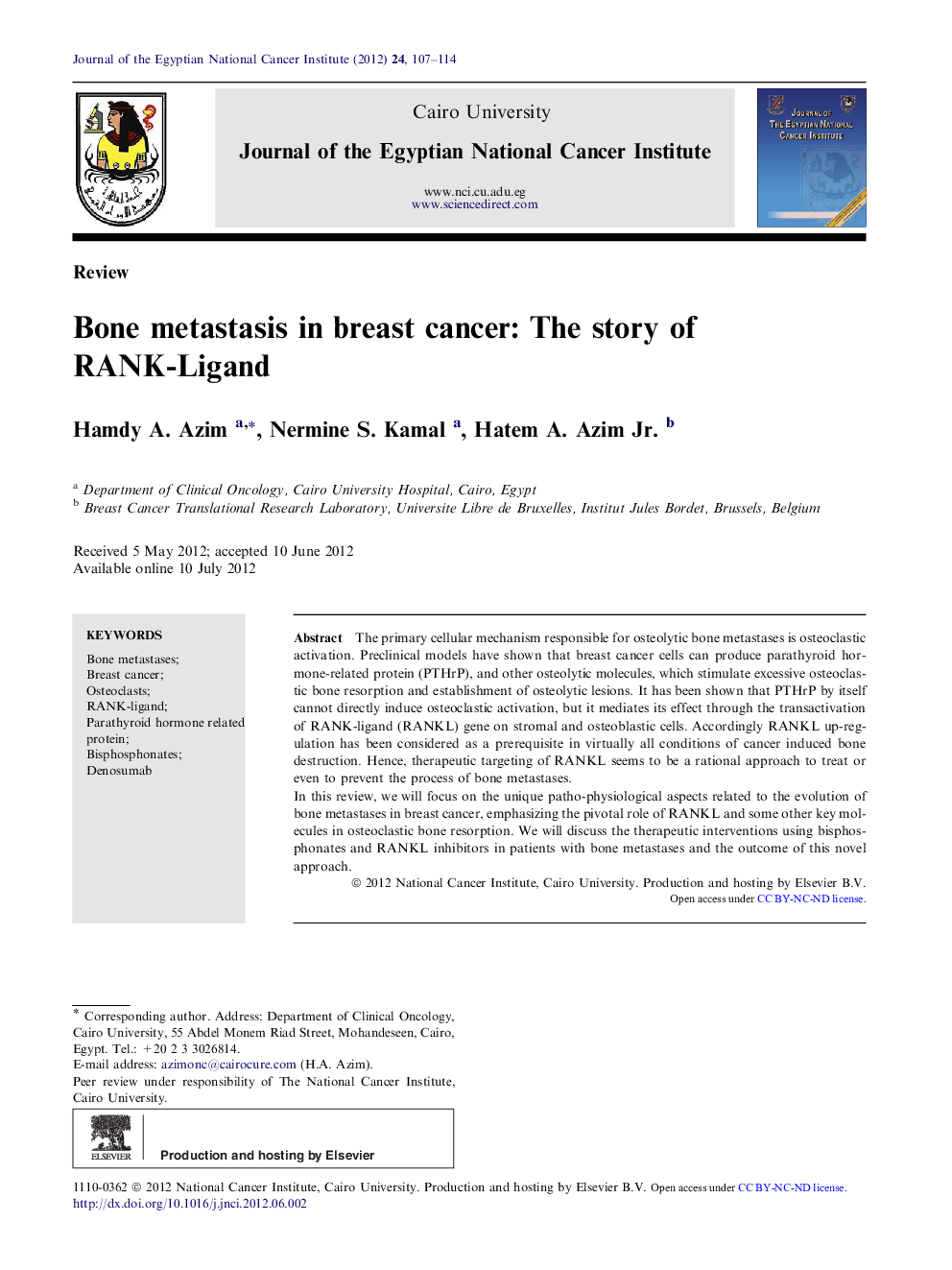| Article ID | Journal | Published Year | Pages | File Type |
|---|---|---|---|---|
| 3988937 | Journal of the Egyptian National Cancer Institute | 2012 | 8 Pages |
The primary cellular mechanism responsible for osteolytic bone metastases is osteoclastic activation. Preclinical models have shown that breast cancer cells can produce parathyroid hormone-related protein (PTHrP), and other osteolytic molecules, which stimulate excessive osteoclastic bone resorption and establishment of osteolytic lesions. It has been shown that PTHrP by itself cannot directly induce osteoclastic activation, but it mediates its effect through the transactivation of RANK-ligand (RANKL) gene on stromal and osteoblastic cells. Accordingly RANKL up-regulation has been considered as a prerequisite in virtually all conditions of cancer induced bone destruction. Hence, therapeutic targeting of RANKL seems to be a rational approach to treat or even to prevent the process of bone metastases.In this review, we will focus on the unique patho-physiological aspects related to the evolution of bone metastases in breast cancer, emphasizing the pivotal role of RANKL and some other key molecules in osteoclastic bone resorption. We will discuss the therapeutic interventions using bisphosphonates and RANKL inhibitors in patients with bone metastases and the outcome of this novel approach.
